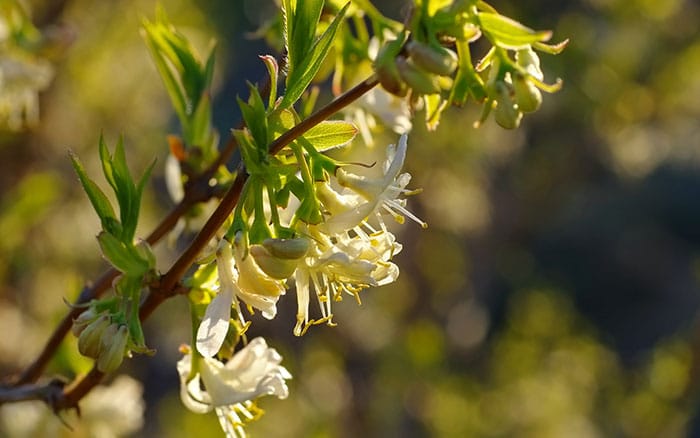There is nothing quite like the sweet scent of honeysuckle when it’s in full bloom. Especially when it hangs in the air on a still, warm, summer’s evening. You want to make the most out of this wonderful plant, and if that means moving it, here are my tips on how to transplant honeysuckle.
Climbing honeysuckle is the perfect choice for a cottage garden, or indeed any informal, relaxed garden style with the open, loose habit of their long twining stems. However, it’s those long stems that can ramble great distances and entwine unsuspecting trees and shrubs growing nearby.
So, here’s the solution if you find yourself in the position where you’re constantly cutting back long stems. It’s much better to move it to a position where it can freely express itself without overrunning other plants.
For deciduous varieties, it’s good time of the year to move it – just after the leaves have fallen and before they regrow in early spring.
With evergreen varieties, the windows of opportunity are this month when the soil is still warm, or March when the soil starts to warm up again.
Advance preparation
First, work out exactly where you’re going to move the honeysuckle to. Dig out the planting hole in advance. Then, loosen the soil around the hole, because you may find the roots are longer than you thought they might be.
Water the soil around the plant the day before you intend to dig it up.
If possible, gather up as many of the stems as possible and tie them in so that you don’t end up in a big tangle.
Have an empty compost bag ready to put the root ball of the plant into as soon as you’ve dug it up. This is because the plant roots hate to dry out.

Digging out the honeysuckle
When digging out the plant, keep as much of the rootball undisturbed as possible. If you can’t dig out all the thick roots, cut them with secateurs or a sharp pruning knife.
Put the rootball of the plant into the bag as soon as you’ve dug it out and keep the roots covered whilst moving it.
If you’re unable to replant it immediately then put compost around the roots in the bag and store it somewhere dark and cool, like a garage. Do this until you’re able to plant it, adding some water, but not too much.

Replanting honeysuckle
Next, place the plant in the pre-prepared hole, carefully spreading out the roots. You may find you need to widen the hole to fit all the roots in. If so, put the plant back into the bag whilst you widen the planting hole to prevent roots drying out.
Make sure the planting hole isn’t too deep or shallow. A good trick is to lay a bamboo cane across the planting hole with the plant in it. If you’ve got the depth correct the old soil-mark should be flush with the planting hole and the cane. Take the time to get this right, as planting too deeply can often kill the plant. On the other hand, planting too high means some of the roots will die off and the plant take longer to re-establish.
Next, pack soil firmly into and around the planting hole using clenched fists, pushing the soil down all around the root ball.
Water the base of the plant well. Keep the hose or watering can low to the soil so that the water goes down into the roots rather than over the stems.
It’s a good idea to add a layer of mulch. This could be garden compost, well-rotted manure or chipped bark, on the soil around the plant after watering in. This helps reduce water loss from the soil around the roots and helps keep weed competition away.


Leave A Comment